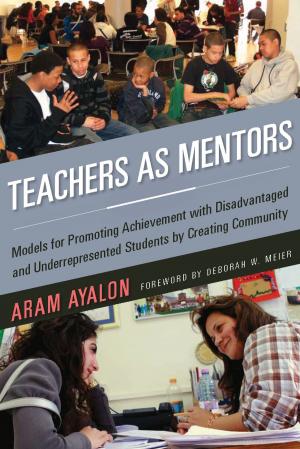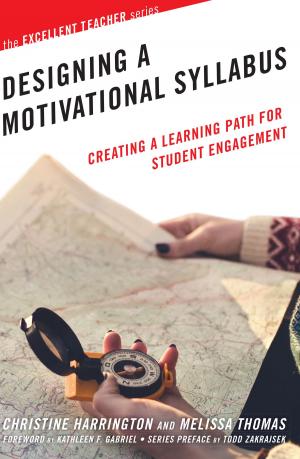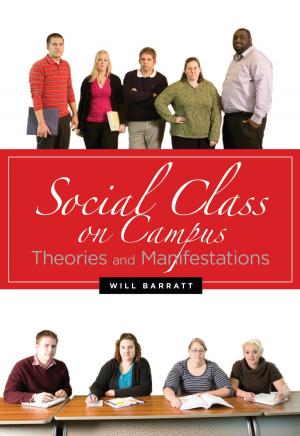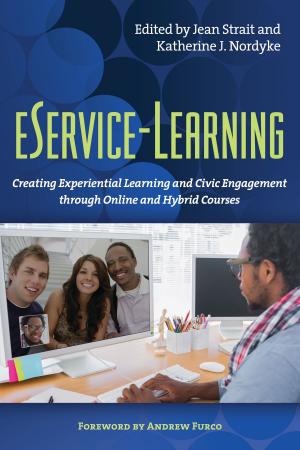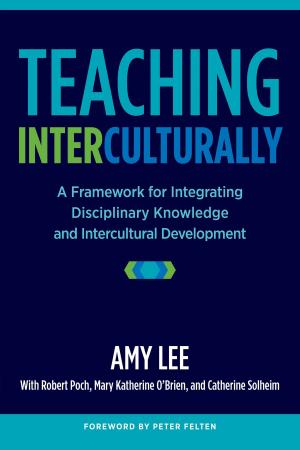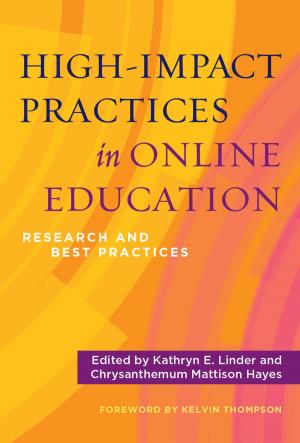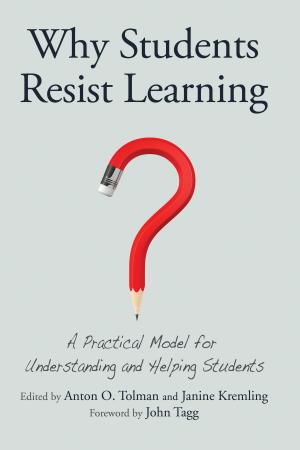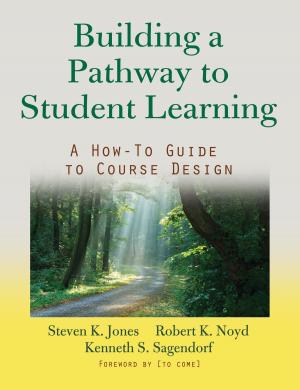Linked Courses for General Education and Integrative Learning
A Guide for Faculty and Administrators
Nonfiction, Reference & Language, Education & Teaching, Higher Education| Author: | ISBN: | 9781579228798 | |
| Publisher: | Stylus Publishing | Publication: | April 30, 2013 |
| Imprint: | Stylus Publishing | Language: | English |
| Author: | |
| ISBN: | 9781579228798 |
| Publisher: | Stylus Publishing |
| Publication: | April 30, 2013 |
| Imprint: | Stylus Publishing |
| Language: | English |
"Soven and her colleagues present powerful illustrations and instructive case studies of effective pedagogy, programs and assessment approaches, and address the organizational structure challenges that can make learning communities more effective, sustainable, and widespread." ? Jillian Kinzie, Associate Director, Center for Postsecondary Research, Indiana University, Bloomington
Research indicates that of the pedagogies recognized as “high impact”, learning communities – one approach to which, the linked course, is the subject of this book – lead to an increased level of student engagement in the freshman year that persists through the senior year and improve retention.
This book focuses on the learning community model that is the most flexible to implement in terms of scheduling, teacher collaboration, and design: the linked course. The faculty may teach independently or together, coordinating syllabi and assignments so that the classes complement each other, and often these courses are linked around a particular interdisciplinary theme. Creating a cohort that works together for two paired courses motivates students, while the course structure promotes integrative learning as students make connections between disciplines.
This volume covers both “linked courses” in which faculty may work to coordinate syllabi and assignments, but teach most of their courses separately, as well as well as “paired courses” in which two or more courses are team taught in an integrated program in which faculty participate as learners as well as teachers.
Research indicates that of the pedagogies recognized as “high impact”, learning communities – one approach to which, the linked course, is the subject of this book – lead to an increased level of student engagement in the freshman year that persists through the senior year and improve retention.
This book focuses on the learning community model that is the most flexible to implement in terms of scheduling, teacher collaboration, and design: the linked course. The faculty may teach independently or together, coordinating syllabi and assignments so that the classes complement each other, and often these courses are linked around a particular interdisciplinary theme. Creating a cohort that works together for two paired courses motivates students, while the course structure promotes integrative learning as students make connections between disciplines.
This volume covers both “linked courses” in which faculty may work to coordinate syllabi and assignments, but teach most of their courses separately, as well as well as “paired courses” in which two or more courses are team taught in an integrated program in which faculty participate as learners as well as teachers.
"Soven and her colleagues present powerful illustrations and instructive case studies of effective pedagogy, programs and assessment approaches, and address the organizational structure challenges that can make learning communities more effective, sustainable, and widespread." ? Jillian Kinzie, Associate Director, Center for Postsecondary Research, Indiana University, Bloomington
Research indicates that of the pedagogies recognized as “high impact”, learning communities – one approach to which, the linked course, is the subject of this book – lead to an increased level of student engagement in the freshman year that persists through the senior year and improve retention.
This book focuses on the learning community model that is the most flexible to implement in terms of scheduling, teacher collaboration, and design: the linked course. The faculty may teach independently or together, coordinating syllabi and assignments so that the classes complement each other, and often these courses are linked around a particular interdisciplinary theme. Creating a cohort that works together for two paired courses motivates students, while the course structure promotes integrative learning as students make connections between disciplines.
This volume covers both “linked courses” in which faculty may work to coordinate syllabi and assignments, but teach most of their courses separately, as well as well as “paired courses” in which two or more courses are team taught in an integrated program in which faculty participate as learners as well as teachers.
Research indicates that of the pedagogies recognized as “high impact”, learning communities – one approach to which, the linked course, is the subject of this book – lead to an increased level of student engagement in the freshman year that persists through the senior year and improve retention.
This book focuses on the learning community model that is the most flexible to implement in terms of scheduling, teacher collaboration, and design: the linked course. The faculty may teach independently or together, coordinating syllabi and assignments so that the classes complement each other, and often these courses are linked around a particular interdisciplinary theme. Creating a cohort that works together for two paired courses motivates students, while the course structure promotes integrative learning as students make connections between disciplines.
This volume covers both “linked courses” in which faculty may work to coordinate syllabi and assignments, but teach most of their courses separately, as well as well as “paired courses” in which two or more courses are team taught in an integrated program in which faculty participate as learners as well as teachers.

